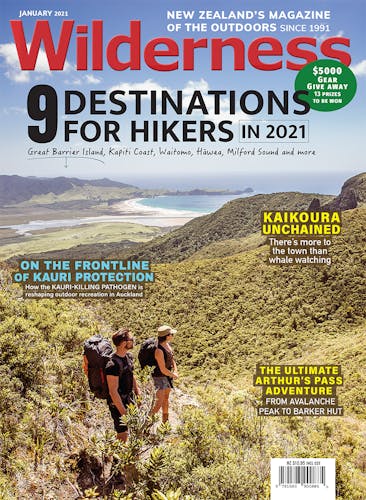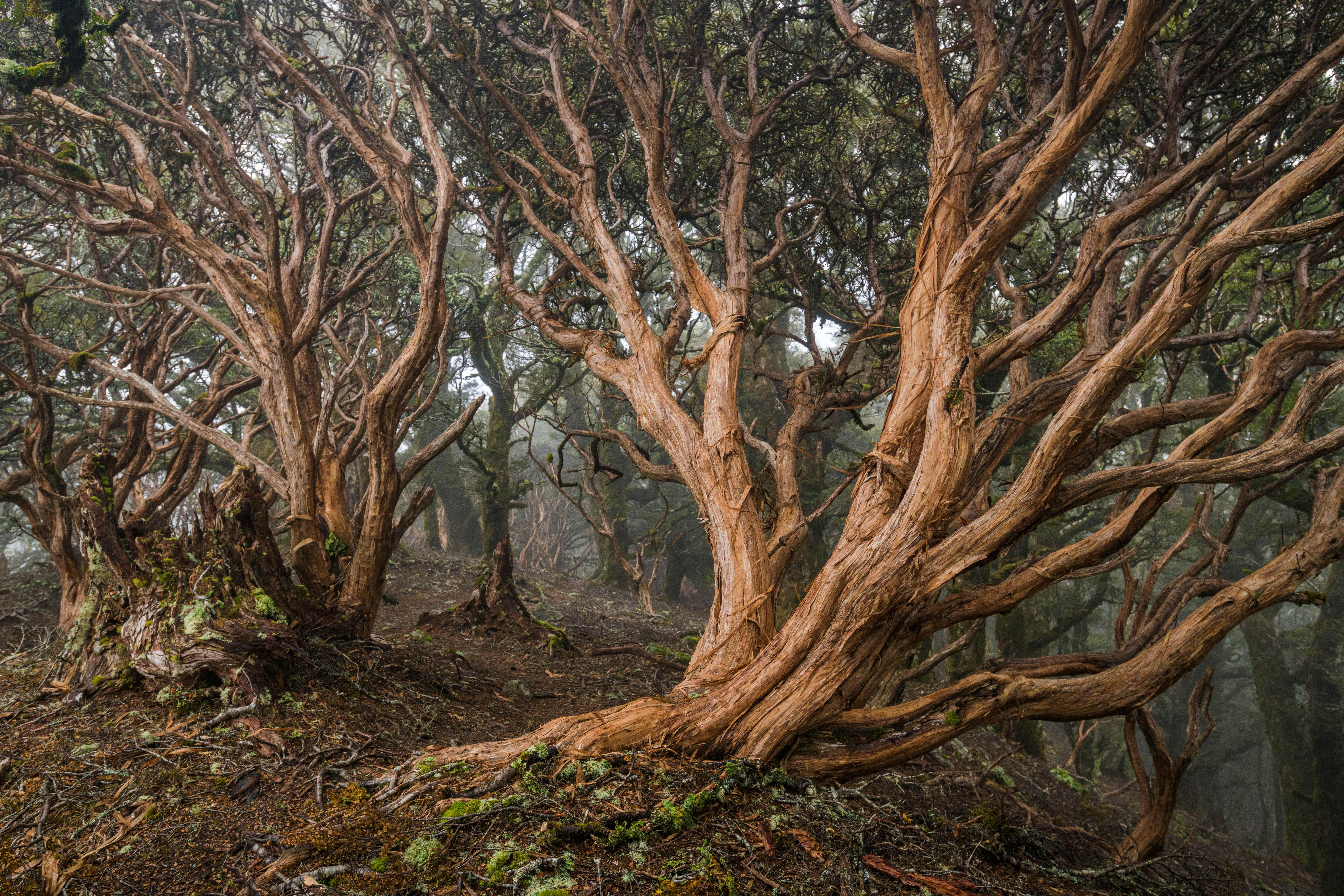While it was a bivouac that attracted me to Mt Sunday, my lasting impression will always be the forest of twisted limbs, the rattling leathery leaves and the sagging strips of bark, which fluttered in the breeze.
I’d chosen an overnight trip to Mt Sunday Biv, situated at the eastern end of the Richmond Range, not far from Blenheim. The track climbed steeply through familiar beech forest, but as I gained altitude this was replaced by a surprisingly wide band of lancewood tree daisy (Olearia lacunosa) – a small tree distinctive for its long, dark green leaves and flaking orange-brown bark. While I am familiar with this member of the tree daisy family, I’d never seen so much of it, nor specimens so big. Dense groves of the tree dominate for much of the route over the summit of Mt Riley, and mist only added to the appeal. After a night at the bivouac, I wandered through more as I tramped over Mt Sunday.
Most trampers are familiar with at least one of the 40 endemic species of our tree daisy family – Olearia colensoi, more usually known as leatherwood. Anyone who has battled through a thick band of this subalpine shrub will know just how tough a tree daisy can be. In contrast, the lancewood tree daisy does not usually form impenetrable bands, and unlike leatherwood, it often grows tall enough (up to 5m) for trampers to move beneath it. The wrinkled leaves are like small concave vessels, with fuzzy insides. From late spring, the plant produces white flowers with a yellow centre, which turn to fluffy seeds later in summer.
The lancewood tree daisy grows from the Tararua Range southwards as far as South Westland and as high as 1500m. Māori, of course, have known the plant for centuries, but the first pākehā record of the tree daisy was from Walter Travers. In 1864, he collected leaves above Lake Rotoroa – in the mountain range now named after him.
Here are four accessible places to see this striking endemic plant.
Kapakapanui Circuit, Tararua Forest Park
This summit rises in the Tararua foothills behind the township of Waikanae and is a popular destination for trampers and hunters. Although low at 1102m, the summit is open with panoramic views over the main Tararua Range and Kapiti Island. The summit can be reached on a 7-8hr circuit, passing Kapakapanui Hut en route. Look out for lancewood tree daisy in the forest just below the tops.
Moa Park, Abel Tasman National Park
The name Moa Park suggests something of the unusual vegetation of this area, in the uplands above the Abel Tasman coast. As well as lancewood tree daisy, the area boasts some 200 species of plants, dominated by an open area of tussock. Easiest access is from Canaan Downs on the Moa Park Track, which takes 2hr. Alternatively, it can be reached on the Abel Tasman Inland Track.
Mt Sunday Circuit, Mt Richmond Forest Park
This enjoyable circuit begins from Davies Road, near the Onamalutu Reserve and camping area, and takes about 8hr – so can be tackled as a day trip, or as an overnighter with a stay at Mt Sunday Biv (two bunks, camping sites nearby). Most of the route is in forest, but there are some exposed rocky outcrops near the summits of Mt Riley and Mt Sunday.
Lodestone, Kahurangi National Park
The Lodestone Track is an enjoyable circuit starting at the Flora car park. It climbs steadily through beech forest to the summit of Lodestone (1462m), passing patches of lancewood tree daisy en route. From the summit, the circuit descends to Flora Hut to join the Flora Track to the car park. Allow 4-5hr return.








